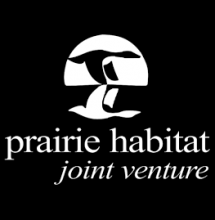
Waterfowl-dense habitat preserved in Manitoba, Canada
By Jessica Shea
Early one warm June morning Curtis Hullick took a walk on land owned by the Shearer family in Manitoba, Canada. The morning was still, apart from the sounds of birds.
“I heard grassland birds, like bobolink and Sprague's pipit, and a lot of waterfowl, like blue-winged teal and mallard,” says Hullick of that June morning in 2018. “Hearing the sounds of so many birds against the backdrop of a quiet morning made me realize the specialness of the land.”
The Shearer family’s land is part of the prairie pothole region of Manitoba. Much of the property looks like it did pre-European settlement, explains Hullick, field manager with the Manitoba Habitat Heritage Corporation. This means the rolling landscape is covered with native prairie grasses and water accumulates in the dips between hills.
What is exceptional about the Shearer’s property, and this region of Canada, is the density of waterfowl and the variety of the types of wetlands. There are 30 to 40 waterfowl breeding pairs per square mile spread among four types of wetlands: temporary, seasonal, semi-permanent, and permanent. The temporary wetlands, for example, are formed from early snowmelt, which gives ducks a place to forage upon returning to the spring breeding areas. There is also significant upland cover, or grass covered areas, on the Shearer’s land where some waterfowl species nest.
“From a bird production standpoint, the Shearer family’s land is the best of the best,” notes Hullick, “and what makes this land particularly special is the people who own it.” The family makes a living as a mixed-farming operation, and they have been successful in doing so without modifying large tracts of their land. “They have a connection to the land and without that connection they would not have put a conservation easement on it, which means it will be in a perpetual state of conservation.”
To compensate the Shearer family for placing an easement on 787 acres of their land, the Manitoba Habitat Heritage Corporation relied, in part, on a grant from the North American Wetlands Conservation Act (NAWCA), which has provided funding for wetland habitat preservation projects in the U.S., Canada, and Mexico since 1989.
According to Hullick, NAWCA funding meant everything to the project. “Without the NAWCA dollars to pay the landowners, we would not have as many wetlands in the prairie pothole region of Manitoba, which means we also wouldn’t have as many waterfowl,” says Hullick.
Over the past 30 years, NAWCA has grown into one of the most significant conservation programs in history. More than 3,000 NAWCA-funded projects have conserved 30 million acres of wetlands and related habitats. The projects span nearly every state, territory, and province in Canada, the U.S., and Mexico. The goal of the multi-billion dollar grant program is to guarantee waterfowl and other wetland-dependant species a diversity of habitats across the continent, from breeding to wintering grounds, in perpetuity.
According to Stephen Carlyle, Manitoba Habitat Heritage Corporation’s chief operating officer, great strides have been made toward achieving waterfowl population goals across North America. The Manitoba Habitat Heritage Corporation is a nonprofit that works in partnership with Manitoba landowners to maintain and enhance fish and wildlife habitat. Carlyle says he would like to see more landowners, like the Shearers, be supported for their conservation efforts on working landscapes.
“The past 30 years of NAWCA funding,” says Carlyle, “has shown that by working together under a single plan [the North American Waterfowl Management Plan] people can turn the tide of habitat loss. The next 30 years of conservation will hopefully see a greater societal awareness of the benefits and values these natural landscapes provide to all people.”
NAWCA-funded projects across Canada, the U.S., and Mexico have improved birdwatching, hunting, fishing, and other outdoor recreation opportunities on public lands. Habitats conserved through NAWCA projects have far reaching impacts. For example, the conserved wetlands store water and recharge aquifers, which helps secure future water supplies. Healthy wetlands also improve water quality by removing phosphates, nitrogen, and pesticides. When wetlands are restored to their natural states, they help prevent soil erosion during floods.
“Thirty years from now, we hope large segments of our population will appreciate natural areas for their value to people as well as wildlife,” Hullick says. “When that happens, people will understand wetlands’ benefits for water quality, flood reduction, and protection of our soil, and as a host of wildlife that enriches our lives. If we achieve that level of understanding, wetland conservation will simply be an accepted part of land-use decisions.”
The conservation easements placed on the Shearer family land ensure that waterfowl, grassland birds, and other animals will have undeveloped land where they can flourish for years to come.
